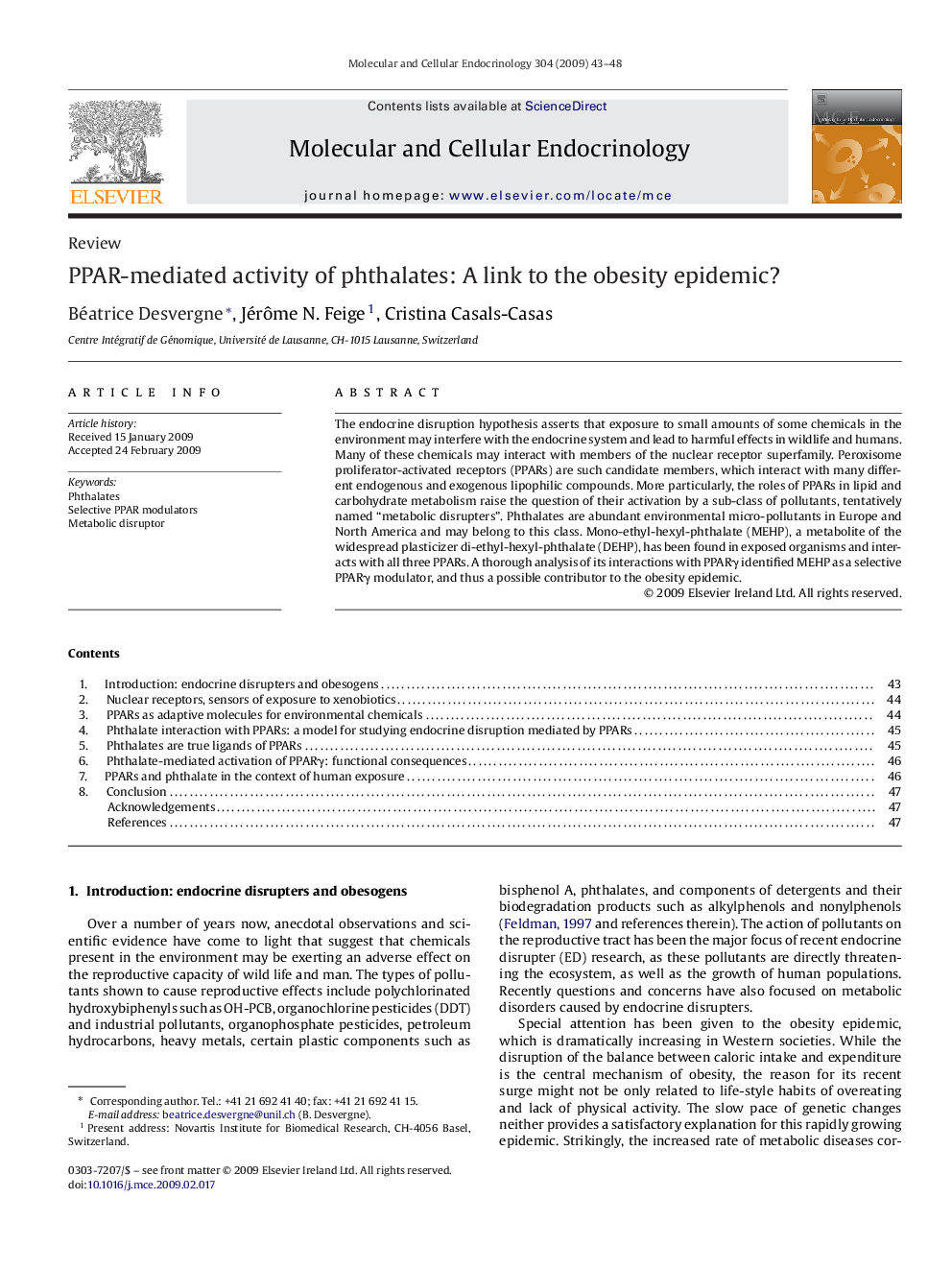| کد مقاله | کد نشریه | سال انتشار | مقاله انگلیسی | نسخه تمام متن |
|---|---|---|---|---|
| 2197398 | 1550959 | 2009 | 6 صفحه PDF | دانلود رایگان |

The endocrine disruption hypothesis asserts that exposure to small amounts of some chemicals in the environment may interfere with the endocrine system and lead to harmful effects in wildlife and humans. Many of these chemicals may interact with members of the nuclear receptor superfamily. Peroxisome proliferator-activated receptors (PPARs) are such candidate members, which interact with many different endogenous and exogenous lipophilic compounds. More particularly, the roles of PPARs in lipid and carbohydrate metabolism raise the question of their activation by a sub-class of pollutants, tentatively named “metabolic disrupters”. Phthalates are abundant environmental micro-pollutants in Europe and North America and may belong to this class. Mono-ethyl-hexyl-phthalate (MEHP), a metabolite of the widespread plasticizer di-ethyl-hexyl-phthalate (DEHP), has been found in exposed organisms and interacts with all three PPARs. A thorough analysis of its interactions with PPARγ identified MEHP as a selective PPARγ modulator, and thus a possible contributor to the obesity epidemic.
Journal: Molecular and Cellular Endocrinology - Volume 304, Issues 1–2, 25 May 2009, Pages 43–48